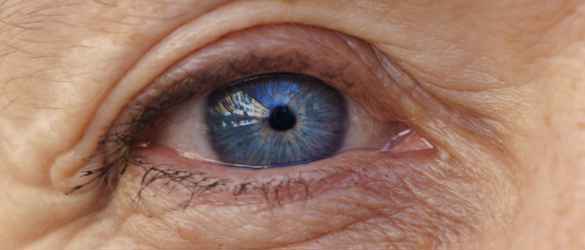What is geographic atrophy?
Geographic atrophy (GA) is the scientific term for late stage dry aged-related macular degeneration (AMD). It is called geographic atrophy, as the damage to the macula tends to start as patches of damage (or atrophy) that look like islands on a map when a doctor looks at the back of the eye.
The different stages of AMD
AMD is a progressive disease which goes through different stages. Not everyone will reach late stage AMD, as the disease develops at different rates for different people.
AMD starts off as early AMD, when an optician may notice small fatty deposits called drusen when looking at the back of the eye. As AMD develops to the intermediate stage, often these drusen get bigger or more abundant, and small patches of the macula may change colour. With early and intermediate AMD the sight is not usually affected, however with intermediate AMD you may start to notice issues such as having difficulty adjusting to changing light conditions. Late stage AMD manifests in two ways, either wet AMD (also called choroidal neovascularisation) or geographic atrophy (often referred to as dry AMD). Wet and dry AMD can occur together.
Treatment
In geographic atrophy cells in the macula become damaged and die which leads to sight loss. Right now, in the UK there are not any treatments for GA, however two treatments were approved in the US this year and may become available in the UK soon.
The areas of cell death or ‘atrophy’ tend to develop initially away from the central area of the macula, called the fovea. The fovea is responsible for the highest quality vision. As the condition progresses the atrophy spreads and can start affecting the fovea, leading to more severe sight loss.
The yellow areas in this illustration show the progression of geographic atrophy.
The two drugs approved for GA slow the progression of the disease by slowing the spread of atrophy through the macula. Both require monthly or every other month injections into the eye.
Research has shown that these drugs are more effective in people with atrophy away from their fovea, called extrafoveal atrophy. These people may get more benefit from the treatments as they still have good central vision to maintain.
Looking for more information or support?
Call the Macular Society Helpline on 0300 3030 111 or email help@macularsociety.org
Learn more on Dry age-related macular degeneration (AMD)
Dry age-related macular degeneration (AMD) is a gradual deterioration of the macula as the retinal cells die off and are not renewed.
Explore the Macular Society's research
Beating macular disease through funding medical research and improving the lives of those living with macular disease.
Get the latest news and advice from the Macular Society
To hear about life-changing research, treatments and tips for living with sight loss, subscribe to our monthly enewsletter today. Together we can Beat Macular Disease.
Sign up to our free email newsletter






